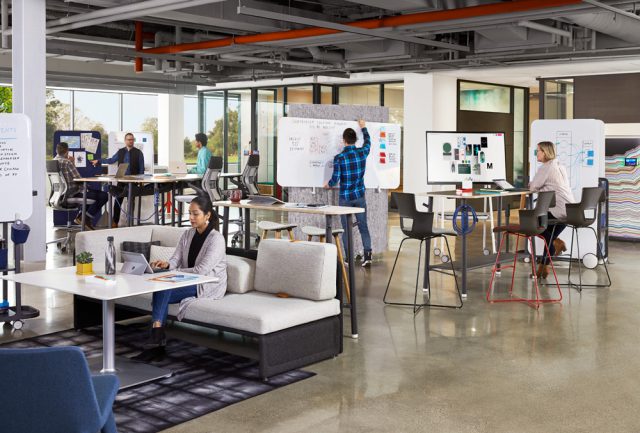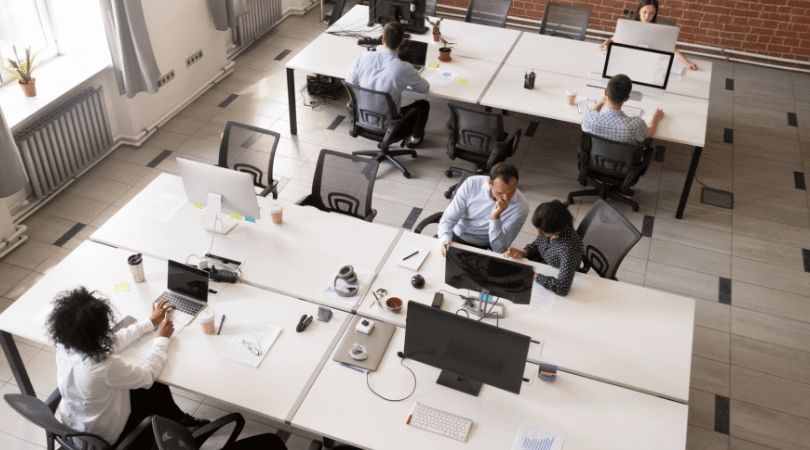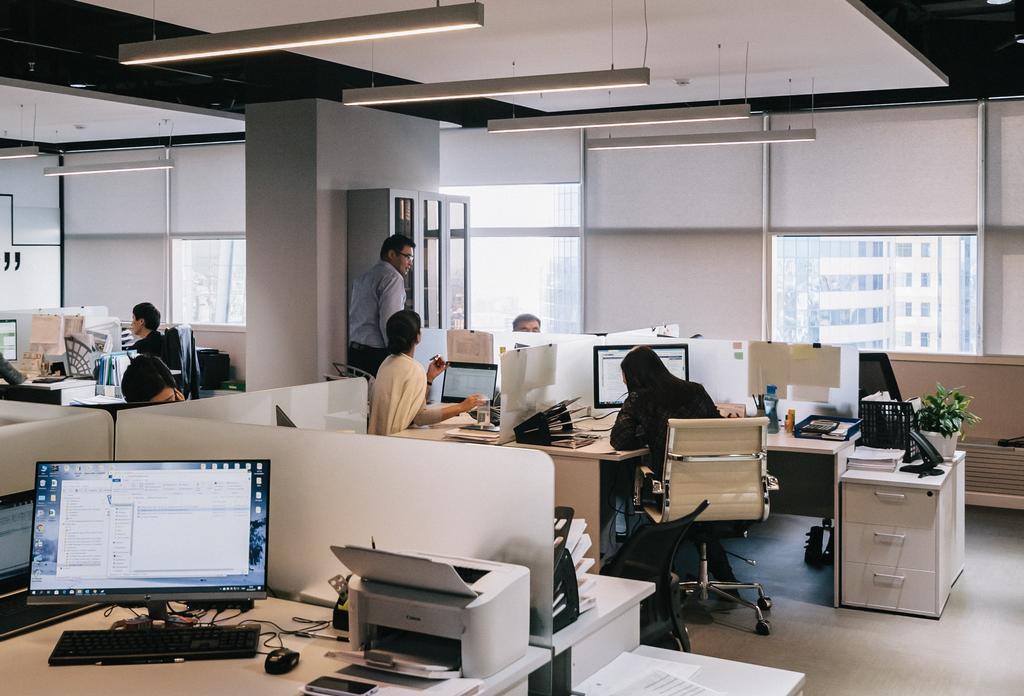What will the office of “Tomorrow” look like?
With the recent events concerning the spread of Covid-19, I am wondering what changes we will see in the office environment? Both near term and long term. How will this impact us once we return to working regularly in an office environment. Also, how will we design new offices, in light of these events? One concern I have is that similar events to this outbreak are likely to occur in the future as well. As our society becomes more dense and urban in nature, the likelihood of broad-based infectious diseases will continue to increase. Our daily work environment probably is going to have to adapt, at least to some extent.
 Most of us are familiar with the concept that has developed over the last decade or so, of the “open office”. Logically there are many reasons why it is considered an improvement by many over the traditional individual office design.
Most of us are familiar with the concept that has developed over the last decade or so, of the “open office”. Logically there are many reasons why it is considered an improvement by many over the traditional individual office design.
Better use of space – studies done over the past 15 years or so have shown that typically, people were only in “their” office about 40% of the time, or less. With a classic “space standard” of around 125-150 square feet per office, you can see that this drove the size of office buildings substantially.
Collaboration – people simply were not able to collaborate on projects, brainstorming, etc. as well when they were all isolated in individual offices. Also, the amount of dedicated office space was a limiting factor in the space available for conference rooms, etc.
Technology has rapidly changing as well. With the introduction of wi-fi and other telecommunications technology, the requirement to be in a specific location to have access to email, internet, files and phone has all but disappeared.
Out of this arose the concept of the open office. Without individual dedicated offices, more space was available for collaboration. Also, taking into account that people were not in their office (or cubicle) full time, this meant that many spaces could be utilized by multiple people over the course of the work day (touch down, hoteling, etc.). All of this meant that we could re-align the way space was used in the office. Not just providing fairly traditional work spaces, but also providing collaborative spaces, as well as space to just “get away” and take a break.
 So what will this look like as we transition into a new tomorrow after most of us return to the office in the next month or two? It would seem that we are going to have to make some substantial changes in our use of space and the way we interact with co-workers. At least for the short-term, if not more permanently.
So what will this look like as we transition into a new tomorrow after most of us return to the office in the next month or two? It would seem that we are going to have to make some substantial changes in our use of space and the way we interact with co-workers. At least for the short-term, if not more permanently.
For starters, of course, telecommuting will not go away. It was already at about 20% of the working environment prior to these recent events. It has taken a tremendous jump (up close to 100%?) during this recent outbreak. I would be very surprised if it dropped back all the way to where it was before this. I would expect it to be approximately double (40%?) in the average work week going forward into “tomorrow”.
This will be helpful, but we are still going to have to re-think our use of space. Looking at the space in the second picture (to the left) how often would this space need to be cleaned daily? What about personal items in the work environment? Do you personally have to clean the chair and table area when you leave it? What about sitting down in a vacant chair next to someone to discuss a document or a project? You can see that the expectations regarding common and multi-use spaces will probably be changing significantly. We will probably even want to consider limiting the number of people in an office area on any given day, thus implementing some form of scheduling for telecommuting.
 How much are we going to have to re-configure existing work areas to make them clean-able and safe? Most likely even cubicle density will need to decrease (how far does a sneeze travel?) in order to meet new standards. Yet perhaps a more difficult problem will be storage of files/documents, tools (pens, staplers, etc.) and personal items (plants, pictures, etc.). Are many of these items going to still be welcome sitting out on desks going forward?
How much are we going to have to re-configure existing work areas to make them clean-able and safe? Most likely even cubicle density will need to decrease (how far does a sneeze travel?) in order to meet new standards. Yet perhaps a more difficult problem will be storage of files/documents, tools (pens, staplers, etc.) and personal items (plants, pictures, etc.). Are many of these items going to still be welcome sitting out on desks going forward?
What about shared resources like break rooms, copy rooms, printers, etc.? Just going to the water cooler or coffee machine? What about meetings and meeting rooms? How and who will keep all of these resources clean and safe?
As you can see, there is a lot to think about as we get ready to return to the office on a “full time” basis.
One can hope, of course, that these changes are short-term. Yet, in all likelihood there will be long term changes in our office environment as a result of this pandemic.
The reality is that the office of “tomorrow” will be different as a result.

